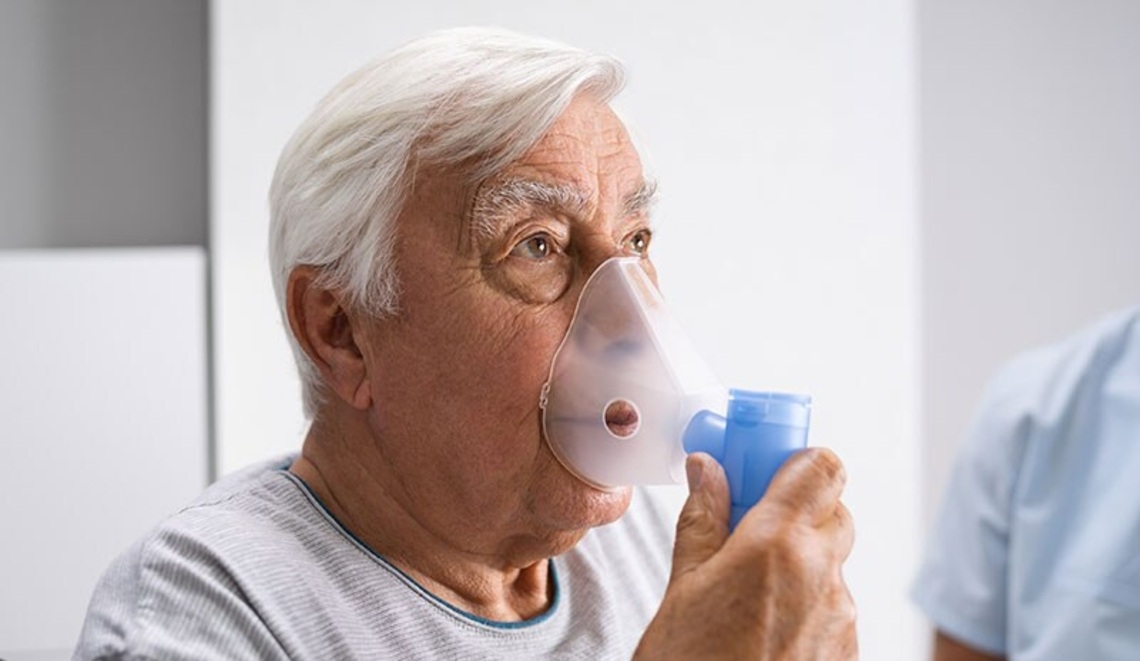

Did you know Houston has really bad air quality? On average, there are about 35 days each year when ozone levels are unhealthy—that’s seven times higher than what the EPA considers safe. In fact, Houston ranks as the 7th worst city in the U.S. for ozone pollution.
According to the American Lung Association’s 2025 “State of the Air” report, Houston experiences on average 34.8 unhealthy ozone days annually and holds the 7th-highest levels of year-round particle pollution in the U.S. These data offer a compelling statistical backdrop that air quality in Houston not only alarms public health advocates—it directly shapes clinical research and treatment strategies targeting chronic respiratory diseases like COPD (Chronic Obstructive Pulmonary Disease).
Also read: Houston Weather & Asthma: Impact & Clinical Trials
COPD—which includes chronic bronchitis and emphysema—is a serious lung disease that gets worse over time. Most people know smoking is the main cause, but air pollution plays a big role too which doesn’t get enough attention. In Houston, high levels of ozone and PM₂.₅ (those tiny, harmful particles in the air) don’t just make COPD more likely—they can also trigger flare-ups in people who already have it.
New research from Harris County (where Houston is located) shows something alarming - people exposed to more PM₂.₅ air pollution between 2014 and 2022 had much higher rates of COPD, heart disease, asthma and strokes. This is especially true for people living near busy roads or industrial areas, proving that where you live can seriously impact your health.
More Insights: The Future of COPD Treatment 2025
To understand how air pollution alters disease progression and intervention efficacy, researchers are integrating air-quality monitoring into clinical trial design, including:
1. Portable sensors worn by patients.
2. Checking patients’ residence areas against local air pollution data to measure their exposure to PM₂.₅ and ozone—two major harmful pollutants.
3. Also looking at other factors that affect pollution exposure - like local weather patterns, how much time people actually spend outdoors, and social factors that might make some groups more vulnerable.
Explore: Can Asthma Specialists Prevent Long-Term Health Problems?
This comprehensive data collection helps us isolate pollution's health effects from other risk factors - giving us more accurate models to predict treatment outcomes for patients in high-exposure areas.
Standard COPD trials focus on breathing tests and quality of life. But in polluted areas like Houston, we need to track pollution-triggered flare-ups—ER visits and steroid treatments—as key outcomes. This makes studies reflect real life.
Low-income areas in east Houston get hit twice: worse air pollution, worse COPD rates. That’s why modern studies actively recruit across economic groups—because medicine should help those who need it most.
Read more: The Impact of Air Pollution on Asthma
1. Inhaled corticosteroids with bronchodilators are still the gold standard—but scientists are testing whether higher or more frequent doses might better protect lungs in polluted areas. They're also exploring antioxidant treatments to fight pollution's damage.
2. Antioxidant therapies focused at reducing pollution-driven oxidative stress in lung tissue are under investigation.
3. There’s increasing interest in anti-inflammatory biologics to prevent intense exacerbations linked to ozone or PM₂.₅ peaks.
1. Personal air filters for home and travel use are being tested for their role in reducing indoor pollution exposure.
2. Mask-wearing trials, especially with medical-grade respirators, evaluate reductions in symptomatic flares during high-ozone events.
3. Remote monitoring of symptoms and local AQI helps patients and clinicians adapt treatment during pollution spikes.
Full Article: The Impact of Environment on Asthma
Environmental variability complicates research:
1. Studies need to account for daily pollution swings—or they'll misjudge how well treatments actually work.
2. Study length is key—trials should cover multiple seasons to factor in air quality changes throughout the year.
3. Cross-site comparisons (e.g., Houston vs. less polluted cities) are reinforcing the generalizability of findings, and identifying site-specific modifications.
The EPA’s decision to lower annual PM₂.₅ limits from 12 to 9 µg/m³ underscores the urgency. Houston ranks sixth worst nationally for PM₂.₅, failing the new requirement.
This tightening drives all segments of COPD clinical research—from early-phase safety studies to pivotal trials—toward stricter environmental controls, stronger data collection and exposure mitigation.
While Houston’s numbers are stark, many cities worldwide face similar or worse air pollution. The lessons from Houston inform global COPD research by:
Emphasizing air quality in site selection and patient eligibility.
Highlighting the necessity of treatment protocols that are sensitive to pollution and can be modified for use in various urban areas.
When respiratory specialists team up with air quality researchers and data analysts, we get answers that actually work in the real world.
See more: Advanced Asthma Research Trials
Air pollution does more than harm lungs—it's quietly changing how we have to treat COPD.
Researchers are using three key strategies—pollution-aware studies, diverse participation, and adaptable therapies—to:
1. Quantify—and monitor—pollution’s impact on study participants.
2. Tailor therapies to function effectively amid environmental stressors.
3. Translate community-based interventions (air filters, masks) into standard care.
The ultimate goal? A data-driven roadmap connecting environmental policy, clinical treatment and community health.
See the Article: Understanding Asthma Triggers
In addition to serving as a warning, air pollution problem is a stimulus for global clinical innovation in COPD treatment. Moreover, asthma treatment in Houston should be tailored to local challenges like humidity, allergens and pollution. Researchers are making progress toward effective and equitable care by combining rigorous environment-aware methods, inclusive trial populations and adaptable treatment pathways.
Hence, COPD research in Houston is expanding rapidly, especially in response to the city’s air quality challenges. And, Biopharma Informatic is at the forefront of COPD and respiratory clinical research. For more details visit our active trials page, and if you want to contribute, volunteer in our clinical studies.
Also, if you're passionate about research and want to grow in this field, don’t miss the online learning options at Biopharma Institute—there’s something for every stage.